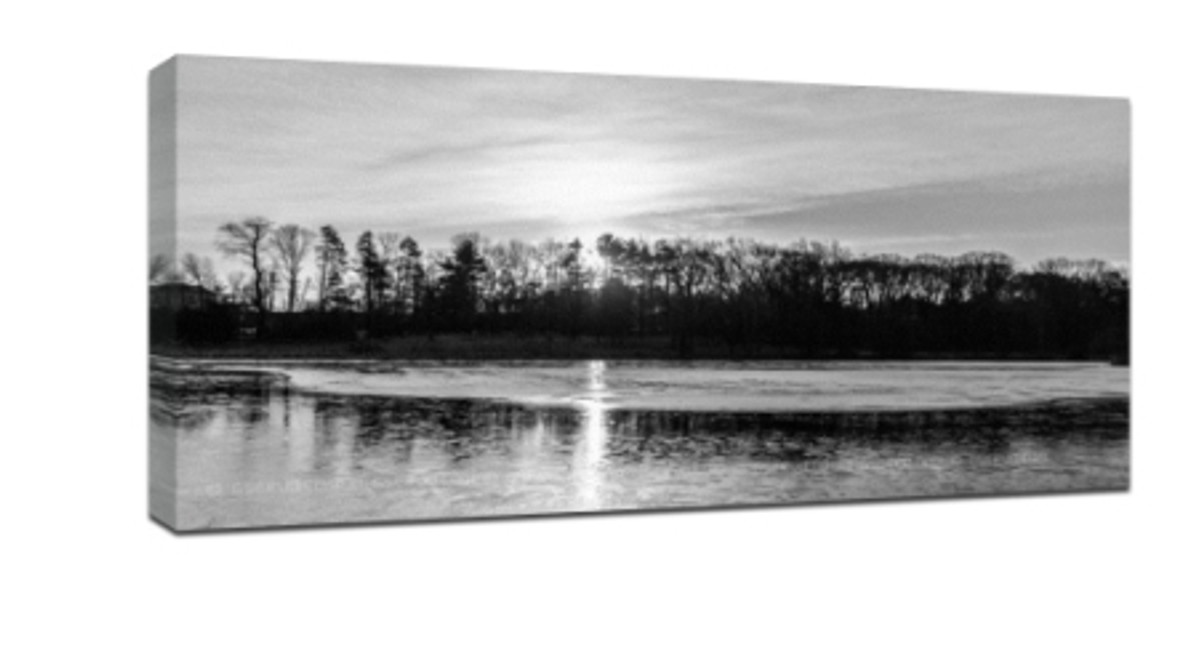8 Tips for Taking Stunning Black and White Photography
Black and white photography has a timeless, classic quality that can turn an ordinary image into an art piece. The simplicity of monochrome tones removes distractions, allowing the viewer to focus purely on the subject, texture, and light. If you're looking to take your black and white photography to the next level, here are 8 essential tips that will help you create stunning images that are perfect for display as Canvas Prints.
1. Master the Use of Light and Shadows
In black and white photography, light plays a pivotal role in the final result. Unlike color photography, where hues add depth and vibrancy, black and white photography relies heavily on contrast and shadows to create mood and dimension. Pay attention to the direction of the light and how it casts shadows. Use natural light whenever possible, or experiment with artificial light sources to add drama to your subjects.
Tip: Try shooting during the “golden hour” (early morning or late afternoon) when the light is softer and warmer.
2. Look for Strong Contrast
Contrast is the heart of black and white photography. A high-contrast image with dark blacks and bright whites creates a striking effect, whereas low contrast can make the image feel flat or dull. Experiment with the range between highlights and shadows to ensure your photograph has depth and visual interest.
Tip: When editing, boost contrast slightly to enhance the blacks and whites. This technique can make your images pop when printed on canvas.
3. Focus on Composition
Composition is just as crucial in black and white photography as it is in color. Strong compositions with clean lines, shapes, and well-placed subjects will translate well in monochrome. Look for interesting elements such as leading lines, curves, and framing that can draw the viewer's eye to the focal point.
Tip: Follow the rule of thirds to position your subject strategically within the frame for a balanced image.
4. Use Textures to Add Depth
Without the distraction of color, textures can become a powerful visual element in black and white photography. Whether it's the rough surface of a stone wall or the delicate folds of fabric, textures add richness and depth to your images. Focus on capturing textures that will be enhanced when the colors are removed.
Tip: Use a macro lens to capture intricate textures up close. These details can transform an ordinary photo into an extraordinary one.
5. Experiment with Filters and Post-Processing
While capturing images in black and white is a great start, post-processing is where you can truly refine the look of your photograph. Software like Adobe Lightroom and Photoshop offers filters and adjustments specifically designed for black and white photos. You can adjust the contrast, brightness, and even tweak the tones to enhance specific elements.
Tip: Use a high-pass filter to sharpen details, and play around with the “clarity” slider to bring out fine details in the textures.
6. Understand the Power of Minimalism
Black and white photography often thrives on simplicity. A cluttered or overly complex scene may not translate well when stripped of its color. Look for minimalistic compositions, where the subject stands out against a clean, simple background. A single subject on a solid, light-colored background can create a striking image.
Tip: Focus on a single subject and remove distractions from the frame. Less is often more when it comes to monochrome photography.
7. Capture Emotion and Storytelling
One of the most powerful aspects of black and white photography is its ability to evoke emotion. Without color, the viewer focuses more on the subject’s expression, the scene’s mood, and the overall composition. Aim to capture moments that tell a story or evoke a specific feeling, whether it’s the loneliness of an empty street or the joy of a candid moment.
Tip: Focus on the subject’s facial expression or body language to convey emotion effectively in black and white.
8. Choose the Right Subject Matter
Certain subjects are more suited to black and white photography than others. Portraits, architectural shots, landscapes, and still life images tend to work well in monochrome. Look for subjects that have strong contrasts, interesting textures, and clear shapes.
Tip: Urban settings with high contrast between light and dark elements often produce striking black and white images, especially when capturing shadows and architecture.
Conclusion:
Black and white photography is a powerful tool for creating compelling, timeless images. By mastering lighting, composition, contrast, and textures, you can create stunning photos that will stand the test of time. Whether you're photographing landscapes, portraits, or still life, these 8 tips will help you elevate your work to new heights. Once you've captured your masterpiece, consider turning your black and white photographs into Canvas Prints to showcase your artistry in your home or office.
Recent Posts
-
Five Reasons Large Canvas Prints Are the Ideal Wall Decor for Your Living Room
Creating a warm, stylish, and inviting living room is a goal shared by many homeowners, and choosing …21st Nov 2025 -
Best Christmas Gifts 2025: Thoughtful Photo Gifts That Make Memories Last
Choosing the perfect Christmas gift in 2025 is all about meaning, practicality, and emotional connec …19th Nov 2025 -
How to Get Custom-Looking Canvas Prints at the Cheapest Prices in Australia
When it comes to decorating your home or office with beautiful artwork, canvas prints are a popular …13th Nov 2025
